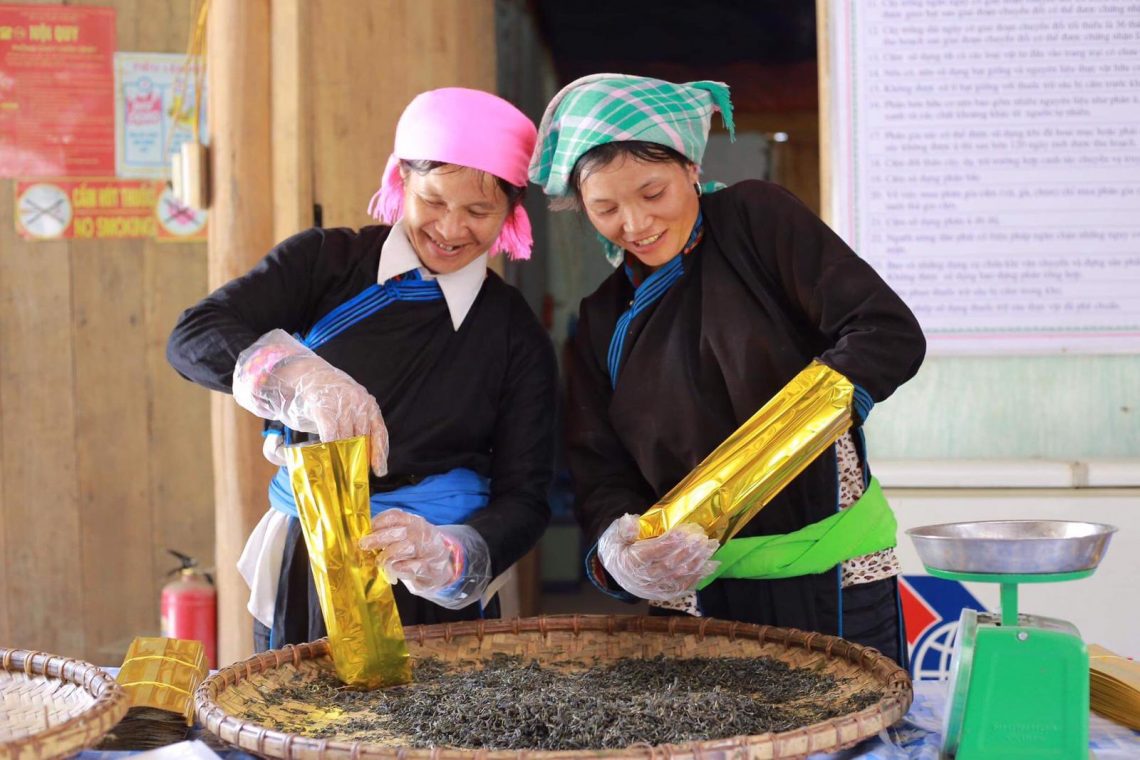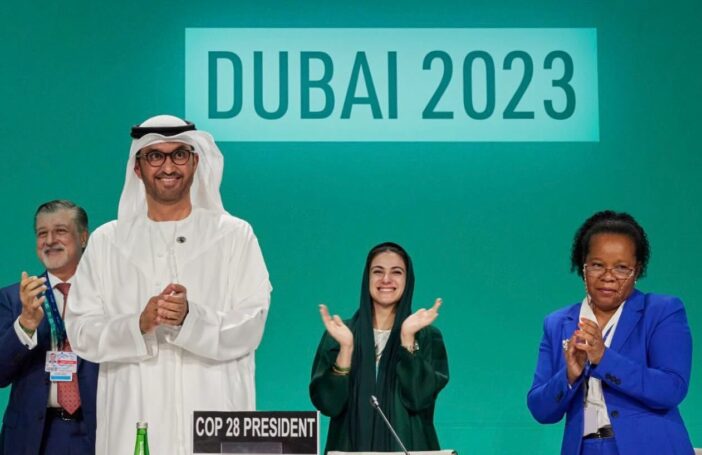In the era of COVID-19, development organisations from the International Institute for Environment and Development to the Asian Development Bank (ADB) are pushing for inclusive business to be the ‘new normal’. With the International Labor Organisation estimating that relative poverty is set to increase by more than 50% in lower-middle-income countries, businesses need to ‘build back better’. Donors, governments, and investors are advocating for businesses to become inclusive through incentive mechanisms such as establishing private equity funding schemes, business coaching, risk sharing, and procurement preferences. But what should count as an ‘inclusive business’, and who is left out? This is a big deal, particularly when tax deductions and other incentives are tied to the label. The rhetoric of large donor organisations is often to privilege large businesses over micro or small enterprises. The problem with this, as we detail below, is that in many countries, the push for ‘big’, scalable solutions excludes the vast majority of local businesses that are well-placed to serve the poor.
Inclusive businesses are defined by the G20 as a commercially viable business model that benefits people living at the base of the economic pyramid (BoP) by including them in the company’s value chain as suppliers, distributors, retailers, or customers. The concept, however, is interpreted and elaborated differently. Some people associate inclusive businesses with the BoP business model, with reference specifically to the poor. Others, like the United Nations Economic and Social Commission for Asia and the Pacific (UNESCAP) and the Inclusive Business Action Network (iBAN), say that inclusive businesses ‘do not exclusively focus on the poor’ but rather the bottom 40% to 60% of the population.
The biggest issue though is the assumption that only medium or large national or multinational companies are inclusive. Assessments of inclusive businesses are typically based on the size of a company in terms of profitability and revenue, the number of poor people reached by the business, and whether the business is innovative and addresses systemic causes of poverty. The ADB even asserts that the number of poor people reached by the business should be at least 1,000.
It seems that the donor preoccupation with reach, scalability, and corporate engagement prevents the vast majority of businesses that could work with the poor from being labelled inclusive. An ADB scoping study that looked at establishing a private equity fund to support inclusive businesses in Vietnam in 2012, for example, limited its study to medium to large national enterprises and multinational companies. A recent landscape study of inclusive businesses in Vietnam carried out by UNESCAP, iBAN, and the Agency for Enterprise Development under the Vietnamese Ministry of Planning and Investment proposes an accreditation system to recognise and provide support mechanisms for accredited businesses, such as business coaching, risk sharing and procurement preferences. All these supports could also be provided to small businesses, but the proposed accreditation scheme gives preference to medium and large enterprises through a focus on commercial return, size, and reach of companies. Even the scholarship on inclusive business supports this bias toward large businesses, by focusing on case studies of large multinationals and their inclusive policies.
This focus on large businesses ignores the micro and small businesses that, according to the IFC, account for 85-95% of the private sector in emerging economies. These figures are even higher in Vietnam, where according to government statistics, medium and large enterprises are only 1.4% and 1.3% respectively of all businesses.
The challenge for donors focused on scalability and ease is to connect these small businesses with the poor. There are examples where this is happening. In rural areas of North-West Vietnam, for example, agriculture and tourism offer strong potential for poverty reduction, inclusive growth and women’s empowerment. Most of the businesses in this area are micro and small enterprises that each connect with around 50-500 smallholder farmers. Programs like DFAT’s Gender-Responsive Equitable Agriculture and Tourism (GREAT) program (with which the first author previously worked) aim to empower ethnic minority women by collaborating with local businesses to include more of these women in their supply chains. The program currently partners with 17 small-medium local enterprises.
The program is still at an early stage but early evidence from internal reporting shows that micro and small businesses can create stable incomes for ethnic minority women. For example, the program works with a local tea company that purchases indigenous specialty tea from small farmers to supply high-end organic markets. The tea company is small, with 13 full-time employees and an annual revenue of around US$290,000. With the GREAT program helping to develop women-led supply chains through training and technical support, the tea company has expanded its business to engage more ethnic minority households in their tea value chains – with an increase from 296 to 697 households over a year and a half. These female suppliers have also increased their profit by reducing production costs, intercropping with medicinal plants, and improving yields. Despite the COVID-19 outbreak, this company has remained committed to buying from local ethnic minority producers. This kind of partnership can be replicated across other businesses in the remote uplands and areas where small enterprises make up the majority of the economy.
In the post-COVID world, building business back better, and rewarding ethical, responsible businesses is certainly a worthy aim. But focusing on only medium and large inclusive businesses ignores the great potential micro and small businesses have for creating jobs and providing better incomes for the poor. In developing countries where small businesses make up the vast majority of the economy, excluding these businesses means that many poor producers are also excluded. Inclusiveness should be defined inclusively: not on the basis of a company’s size or revenue, but on the basis of the positive impact that support to a company, group of companies, or sector can create for the poor.






Dear Ms. Nguyen Phuong and Mr. Alice Behan. A friend of mine sent me your blog, which I found quite interesting. As the former head of ADB’s Inclusive Business initiative and having done in the last 3 years various policy studies and strategies on IB (also recently in Viet Nam), I’d like to respond to some of your points. I therefore wrote a more elaborated reply of which my main points are below. I am sure we share most of suggestions, and I would be happy to exchange more with you. Can you share your email address with me so that I can send you the text. Let’s keep the exchange floating; the topic is so important. I am happy to share some information on the Viet Nam study I did by the way the company you refer to is an IB and if the government establishes some of the support policies we discussed that company will be included). I am happy to share also more information on Viet Nam. (and other countries). Thanks and best wishes. Dr. Armin BAUER (former head of ADB’s inclusive business initiative)
1) IBs not defined by size but by systemic impact on the poor.
2) Smaller companies (and also social enterprises) can be IB.
3) Proposed IB support mechanisms – once set up are for smaller companies also.
4) In agribusiness not the employment size matters but the number of people for whom the company creates income opportunities above the market rate through their value chain.
5) IB accreditation is the best way for government and business association to ensure transparent selection of IB and targeting support mechanism to the private sector.
6) IB promotion must go beyond SME support policies.
7) Only a few incentives are relevant and access to funding is not the main problem.
8) Various countries (and their their governments and business associations) in ASEAN see the triple win opportunities of IB (for the poor, for society, for business) and now come up with IB support strategies. and programs. This needs to be further encouraged.
9) COVID 19 is a window of opportunity not to build back better but to transform some mainstream businesses and NGO-driven social enterprises into IB business models, initiatives and activities that serve in a more relevant way the BoP/B40 income groups.
10) But while more IBs are important for development, IB will not become (and does not need to) the new normal of private sector investments; it is one type of business, and others are also important.
Thank you very much Dr Armin Bauer for your feedback. Great to know that we share most of the suggestions. Grateful if you can share more information on your research in Vietnam. I will email you directly for the exchange. Cheers
I agree that a focus on direct engagement with inclusive businesses may leave others behind – especially SMEs that comprise large segments of the economies we work in, and where many of the poorest are active as suppliers, laborers and customers. However I do not think that a simple switch to working with SMEs provides an efficient, viable, and scalable solution. The example of GREAT more or less proves this: an AUD 34m program that has supported 17 of Vietnam’s approximately half a million SMEs does not present a strong case. Rather, the answer lies in a more systemic approach that addresses underlying causes of underperformance in sectors in which SMEs are prevalent – be they policy or weaknesses in supporting functions and services such as finance, R&D, and adopting industry standards etc.
Thank you very much for your comments, Tim. I agree that it is important to take systemic approach to address the “root causes” of underperformance in the sector. That’s is exactly the approach that the GREAT program is taking. The purpose of the article is to critique the approach to supporting only medium and large businesses and excluding micro and small businesses, which also have great potential for creating jobs and providing better incomes for the poor. As such, we did not mention other partnerships that the GREAT program is doing with NGOs and government agencies to address the issues as you mentioned. FYI, there are 50 partnerships under the GREAT progamme.
Dear Tim. I fully agree that in developing Asia SMEs have structural weaknesses with productivity, not being able to pay high wages etc. Most IBs are actually innovative, commercially viable, dynamic medium-sized enterprises where the management is interested in finding solutions for the B40 which also make business sense. There are not so many IBs worldwide and in Asia, in our studies we typically find maybe 20-100 per country. but the number is increasing. Anyway, the number of companies and their sizes (IB can be small companies, medium sized, large, national or international companies) does not matter for the IB discussion, rather their transformative and systemic character of impact. And systemic change needs also some size and some commercial sustainability; in result, most IB are medium-sized firms. I am currently writing a more elaborated reply to the original blog. If you wish a copy let me know through email. Armin BAUER
Hi Armin, sorry I didn’t see yours and Phuong’s responses until now. I’d be keen to see any follow up work that you undertake on this subject as its highly relevant to our work. I couldn’t see your email; mine is on the thread and I have Phuong on LinkedIn. Tim